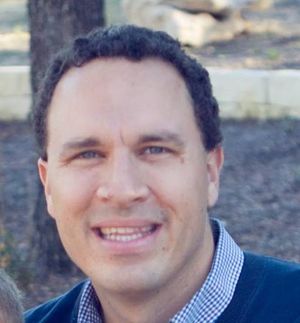I was getting hammered on Facebook.
It started when I posted something positive about the Catholic Church.
Out of the woodwork, seemingly, people began slinging mud at me and the Catholic Church for the sexual abuse scandal.
Not wanting to deal with it, I closed down Facebook and opened my email, only to find this message from a fellow Catholic:
“I have lost all faith in the Catholic Church after hearing about the abuse scandal. I am sick of hearing this! I have not lost my faith in God, but I don’t want anyone to know that I am a Catholic. I’m embarrassed.”
I emailed him back, attempting to encourage him not to lose heart, but his feelings were understandable.
The next day, I attended a get-together with some Catholic friends. One was a salt-of-the-earth Catholic husband and father like me.
He said to me, “I don’t know what to think anymore. I’ve always thought that people who abandoned and attacked the Catholic Church were crazy, but lately I’m beginning to wonder if I’m really the crazy one for remaining Catholic.”
This admission made me realize that it wasn’t just enemies of the Church, nor some Catholics out in the ether who questioned their faith due to the scandal, but even close friends I’ve always considered rock-solid Catholics.
Deeply disturbed by these events, I wanted to hide somewhere.
I went home and picked up Robert Cardinal Sarah’s book, The Day Is Now Far Spent, a book I bought because he addresses the Church’s abuse crisis.
I read these words from Cardinal Sarah:
“We reform the Church when we start by changing ourselves! Let us not hesitate, each one in his place, to denounce sin, starting with our own.” (pg. 15)
Cardinal Sarah’s words seemed wise to me. I wanted to put them into practice, but when I thought of my sins, especially the ones I went to Confession for, I realized I confessed the same sins over and over for years.
In other words, I had hit a spiritual plateau. Thinking that I could break through it and do the same things was simply wishful thinking. I needed to do something concrete. But what?
I prayed for the grace to discover the key to unlocking this problem. One night while wasting time on YouTube, I came across a Catholic priest’s video on meditation. I have always been on guard about meditation, since I associated it with Eastern Mysticism.
But I decided to watch it. The priest explained that Catholic meditation, also called mental prayer, is quite different from Eastern Mysticism.
He described the basic steps of mental prayer:
1) Go to a quiet place and put yourself in God’s presence.
2) Pray for the grace to meditate and choose a subject. (The Crucifixion, the Incarnation, the virtues of the saints, or God’s goodness, for example).
3) Begin considering it in your mind and heart. Soon, affections will arise within you, which is your heart’s response to these truths. For instance, I usually feel contrition while meditating upon Jesus’ Passion.
4) Bring your needs to God in silent prayers of petition. As you continue meditating, it is natural to begin thinking of your needs, or the needs of your loved ones.
5) Consider your predominant fault and offer it to God. (A good place to start is the sin you repeatedly confess). You can contemplate how you fell into temptation, making a concrete resolution to overcome the fault using specific steps or practices.
The priest said to conclude the mental prayer by thanking God for giving you graces in overcoming sin.
I was intrigued and began throughly researching mental prayer. I came across this quote from St. Alphonsus Liguori: “Every saint became a saint through mental prayer.”
That was enough motivation for me. I began doing five minutes of mental prayer per day.
I’m embarrassed to say that sitting for five minutes quietly with God was difficult. My thoughts wandered. I wondered whether I did it right. I didn’t “feel” very much of anything, so I thought perhaps God wasn’t really helping me with it.
Nonetheless, I persevered, and kept praying for five minutes a day. Eventually, I increased the time to ten minutes. It got easier, and I got the hang of it.
When I reached the end of my mental prayer, I gave God my predominant fault, and I started resolving on defeating it. Months went by, and one time after Confession, I realized with surprise that I did not have to confess my main fault!
Mental Prayer worked. I was so grateful that Our Lord revealed it to me.
I now had a new way to follow Cardinal Sarah’s directions to denounce sin within myself and renew the Church by beginning with myself.
I began to share Mental Prayer with my friends, eager for them to start doing it and reaping the benefits. They don’t need to be ashamed of their Catholic Faith, and they can take positive steps to bring renewal within the Church.
After discovering mental prayer, I thought about other saintly practices I found over the past two decades as a Catholic.
I made a list of each and how I discovered them, and realized that they made a recipe of sorts–a recipe that all the saints knew and lived. Mental prayer was a key ingredient to the recipe, but in my own life thus far, I found nineteen more.
I compiled these ingredients with their accompanying stories into a book called Lionheart Catholic. Instead of hiding our Catholic faith or wanting to leave it entirely, I doubled down on it, because I believe in Christ and His Church.
To learn and discover more about the other nineteen ingredients in the recipe, check out my book here.
[See also: How a Simple Novena to St. Joseph Changed This Convert’s Life Forever]
[See also: Invoke All the Saints! New Must-Have Novena App Keeps You Praying]


